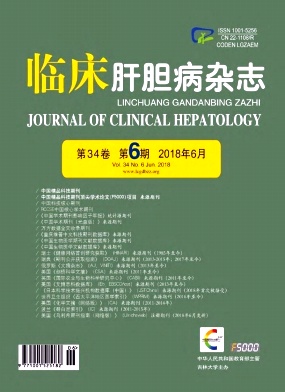Objective To establish a noninvasive diagnosis equation for nonalcoholic fatty liver disease (NAFLD) using related clinical and laboratory markers, and to investigate the value of this equation in the prediction and diagnosis of NAFLD. Methods A total of 127 patients who were diagnosed with NAFLD in The First Affiliated Hospital of Xi' an Medical University from November 2016 to November 2017 were enrolled, and 30 healthy individuals were enrolled as healthy controls. Related data were recorded, including sex, age, body mass index (BMI) , medical history, alanine aminotransferase (ALT) , aspartate aminotransferase (AST) , gamma-glutamyl transpeptidase (GGT) , blood urea nitrogen (BUN) , uric acid (UA) , serum creatinine (SCr) , total cholesterol (TC) , triglyceride (TG) , high-density lipoprotein (HDL) , low-density lipoprotein (LDL) , Hb Alc, free fatty acid (FFA) , fasting blood glucose (FPG) , fasting insulin (FINS) , platelet count (PLT) , and results of ultrasound examination and Fibro Scan examination. The t-test was used for comparison of continuous data between groups; the Pearson correlation analysis was performed to investigate correlation; the multiple linear regression equation model was used to establish the regression equation; the receiver operating characteristic (ROC) curve was plotted to calculate the sensitivity and specificity of this regression equation. Results The indices related to fatty liver included BMI (r = 0. 308, P = 0. 005) , ALT (r = 0. 379, P < 0. 001) , AST (r = 0. 318, P = 0. 004) , GGT (r = 0. 293, P = 0. 009) , UA (r = 0. 244, P = 0. 033) , and FFA (r = 0. 249, P =0. 030) . A multiple regression analysis was performed for controlled attenuation parameter (CAP) on Fibro Scan; the regression model of CAP had statistical significance (F = 11. 113, P < 0. 001) , and its adjusted determination coefficient R2 was 0. 274, suggesting that the variation caused by regression accounted for 27. 4% of all variations; ALT had the greatest influence on CAP (β = 0. 358, P = 0. 001) , followed by BMI (β = 0. 258, P = 0. 012) . The regression equation established was CAP = 113. 163 + 0. 252 × ALT + 6. 316 × BMI. This diagnostic equation had an area under the ROC curve of 0. 927, a sensitivity of 87. 68%, and a specificity of 90. 00%, at the cut-off value of277. 67 (P < 0. 001) , suggesting that it had high diagnostic efficiency. Conclusion Compared with current diagnosis equations, the equation established in this study has a larger area under the ROC curve and higher specificity and sensitivity. It also has a simple calculation method and strong practicability and operability and helps to screen out early NAFLD and improve the awareness of self-intervention, which can further reduce the harm and delay the progression of NAFLD in the world.







 DownLoad:
DownLoad: